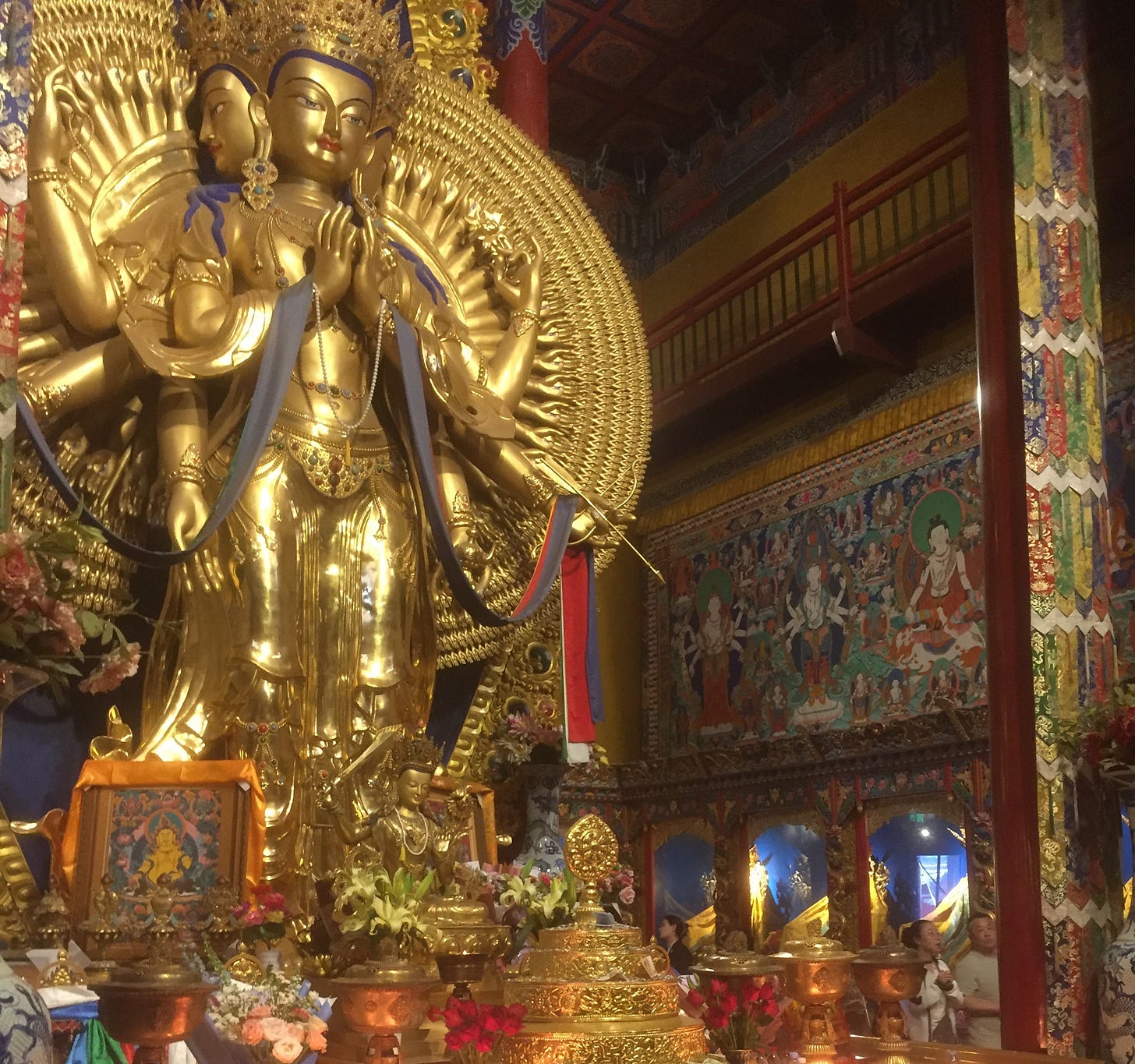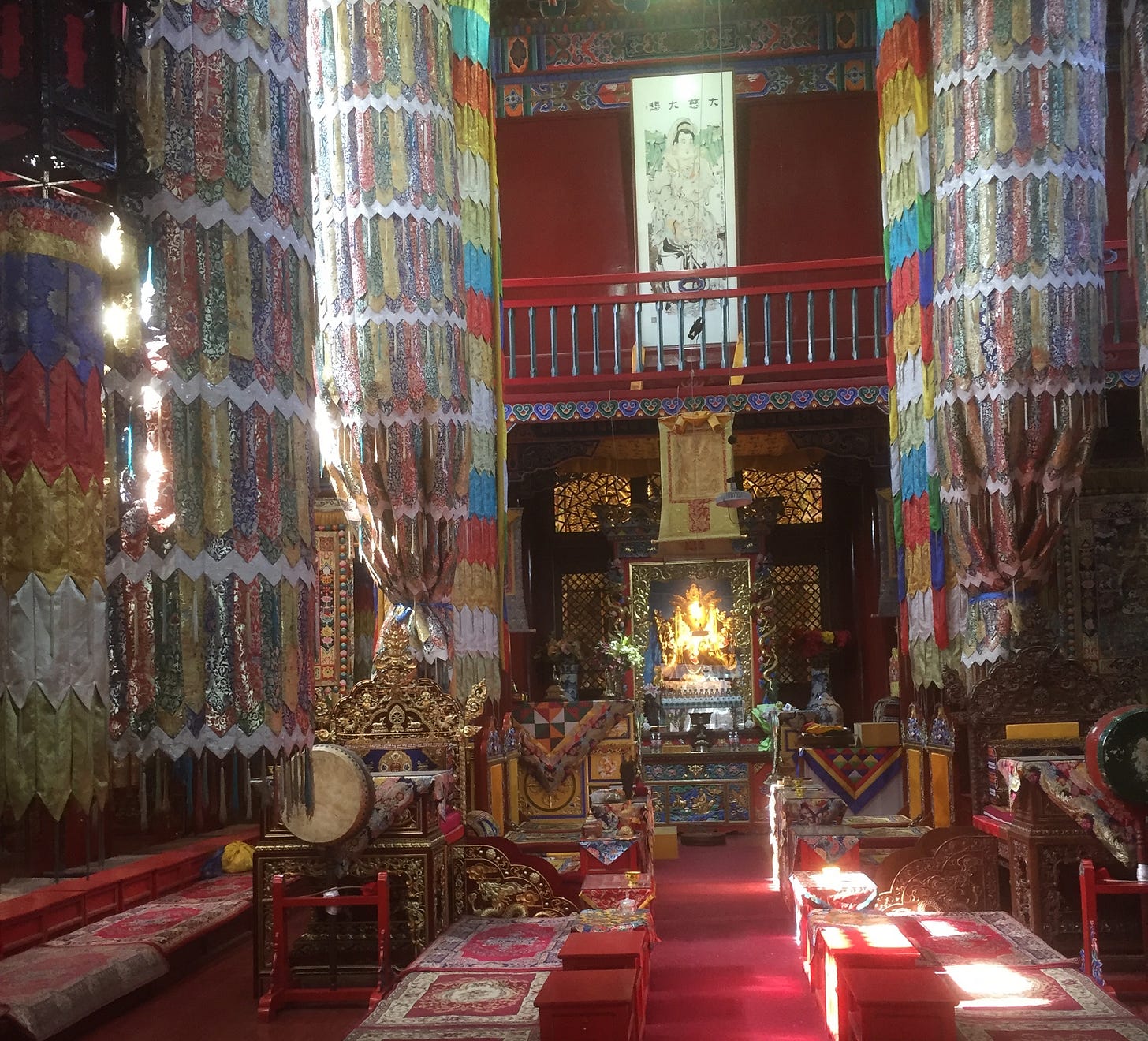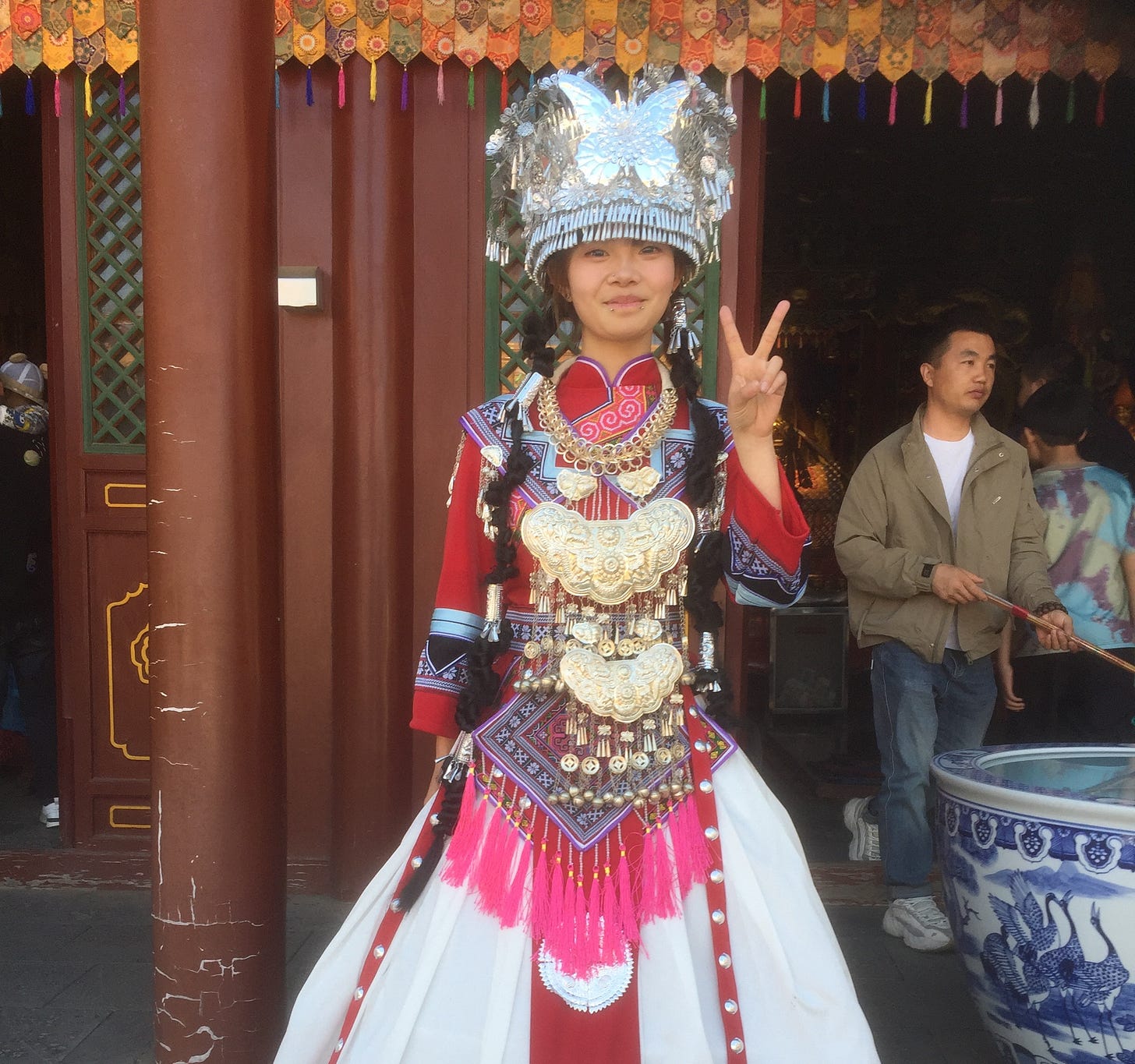The first part of a three-day train journey stops at Hohhot, where Tibetan Buddhism first came to Mongolia, and it is now the capital of Inner Mongolia, which is part of China, whereas Outer Mongolia is an independent country. And history is full of anomalies.
Some Chinese think all of Mongolia should be part of China, as shown in a map in the local museum. Given, however, that Kublai Khan, Chinggis Khan’s grandson conquered all of China, maybe China should be part of Mongolia!
Then there’s the fact that there are more Mongolians in China (Inner Mongolia) than there are in Mongolia. Secondly, the Mongolian script is used in Inner, whereas in Mongolia proper, they use the improper Cyrillic alphabet, from Russia of course. There again, the proper Chinese script is used only in Taiwan and Hong Kong, for Mandarin Chinese is a modern simplification of the real thing, introduced by Máo shorty after the declaration of the Republic in 1949. (In another divided land, the Serb can talk to and understand the Croat, but they can’t write to each other, because of these different scripts. While in China, the Mandarin-speaker on the mainland can write to a Hong-Konger, but they can’t talk to each other.)
But back to Mongolia. In the old days, China built the Great Wall, to keep out all the ‘barbarians’ as they called them, the peoples to the North: the Khitans, the Jurchens and the Mongolians (East to West). But their political structures were common to all these nomad people. They held National Assemblies, not least to ‘elect’ their leader, probably by the acclamation of probably a mainly manly gathering of the nobles. The Khitans went one further: after three years, they’d have another assembly to decide if the leader was ok, and if not, he would be replaced! (Please note, Mr Putin!)
The Wall was a total failure. All three peoples invaded: the Khitans, the Jurchens and the Mongols, and hence the Liáo, the Jīn and the Yuán Dynasties - the first two occupying huge tracts of China, while the Mongolians took it all! (And no wonder the Russian word for China is Китай, so I speak по Русский of course but also по Китайский. Well, I try. But having crossed a big part of the Gobi Desert to then come to the border, I got onboard the third train, this one to Ulaanbaatar, and I share a meal with Russian-speaking Mongolians. Oh очень хорошо (ochin harasho), very good.
But what was it, I wonder, which inspired the Jurchens, in 1197, to hold the world’s first multi-option vote on what we in Europe would regard as a binary question: war or peace… with Mongolia. It was a world of no borders, of might is right, where various peoples would conquer each other and defeated soldiers would sometimes then fight with their victors. So what was it, I wonder, which prompted the Jurchen government to hold a three-option vote on (a) war, (b) intermittent wars, and (c) peace: the 84 members vote (a) 5, (b) 33 and (c) 46… so peace won; a happy omen for pluralism. Sadly, it didn’t last for long. In 1206, Chinggis Khan arrived. And that multi-option vote was unique, until New Zealand had a three-option vote in 1894. Britain eventually had one, in 1948; a referendum in Newfoundland which the British had wanted a binary ballot, but the good folks of Halifax protested: oh alright; a third option was added, and it won. The experiment has yet to be repeated. In Ireland, it hasn’t even been tried.






